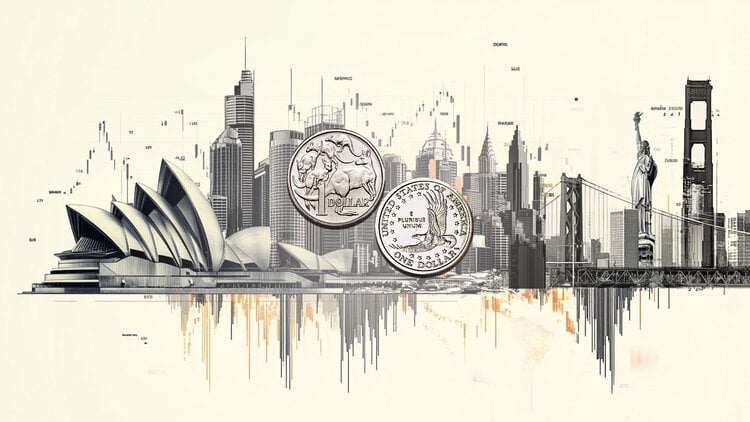- The Dollar bleeds on tariff uncertainty and US debt concerns.
- Strong Australian manufacturing data has provided support to the Aussie.
- The focus today is on the US Manufacturing PMI and Fed Powell’s speech.
The Australian Dollar is one of the stronger performers on Monday. The sour risk sentiment is not weighing the Aussie today, which is drawing support from a weak US Dollar to reach levels right below 0.6500.
The Greenback has opened the week on the back foot, hit by a mix of events. Trump’s vow to hike Steel and Aluminium imports to 50% threatens to further constrain economic growth and stoke inflation, which has revived investors’ fears of stagflation.
Beyond that, the US president has opened a new front in an already frail trade relationship with China, while market concerns about the impact of a tax-slashing bill on the country’s fiscal health remain looming. All, this is giving a fresh boost to the “sell America” trade.
Australian manufacturing activity keeps growing
In Australia, the S&P Global manufacturing PMI revealed that the sector’s activity continued growing in May, albeit at a slower-than-expected pace. These figures support the hawkishly tilted message by the RBA last week and provide some support to the AUD.
In the US, the focus today is on the ISM Manufacturing PMI, which is expected to have continued improving in May, although still at levels reflecting contraction. The US Dollar needs a positive surprise here to ease bearish pressure.
Apart from that, Fed’s Logan and Goldsbee will meet the press ahead of Chairman Powell. Their comments about economic growth, employment, and inflation will be analysed with attention for clues about the bank’s plans for June and July meetings.
US-China Trade War FAQs
Generally speaking, a trade war is an economic conflict between two or more countries due to extreme protectionism on one end. It implies the creation of trade barriers, such as tariffs, which result in counter-barriers, escalating import costs, and hence the cost of living.
An economic conflict between the United States (US) and China began early in 2018, when President Donald Trump set trade barriers on China, claiming unfair commercial practices and intellectual property theft from the Asian giant. China took retaliatory action, imposing tariffs on multiple US goods, such as automobiles and soybeans. Tensions escalated until the two countries signed the US-China Phase One trade deal in January 2020. The agreement required structural reforms and other changes to China’s economic and trade regime and pretended to restore stability and trust between the two nations. However, the Coronavirus pandemic took the focus out of the conflict. Yet, it is worth mentioning that President Joe Biden, who took office after Trump, kept tariffs in place and even added some additional levies.
The return of Donald Trump to the White House as the 47th US President has sparked a fresh wave of tensions between the two countries. During the 2024 election campaign, Trump pledged to impose 60% tariffs on China once he returned to office, which he did on January 20, 2025. With Trump back, the US-China trade war is meant to resume where it was left, with tit-for-tat policies affecting the global economic landscape amid disruptions in global supply chains, resulting in a reduction in spending, particularly investment, and directly feeding into the Consumer Price Index inflation.

